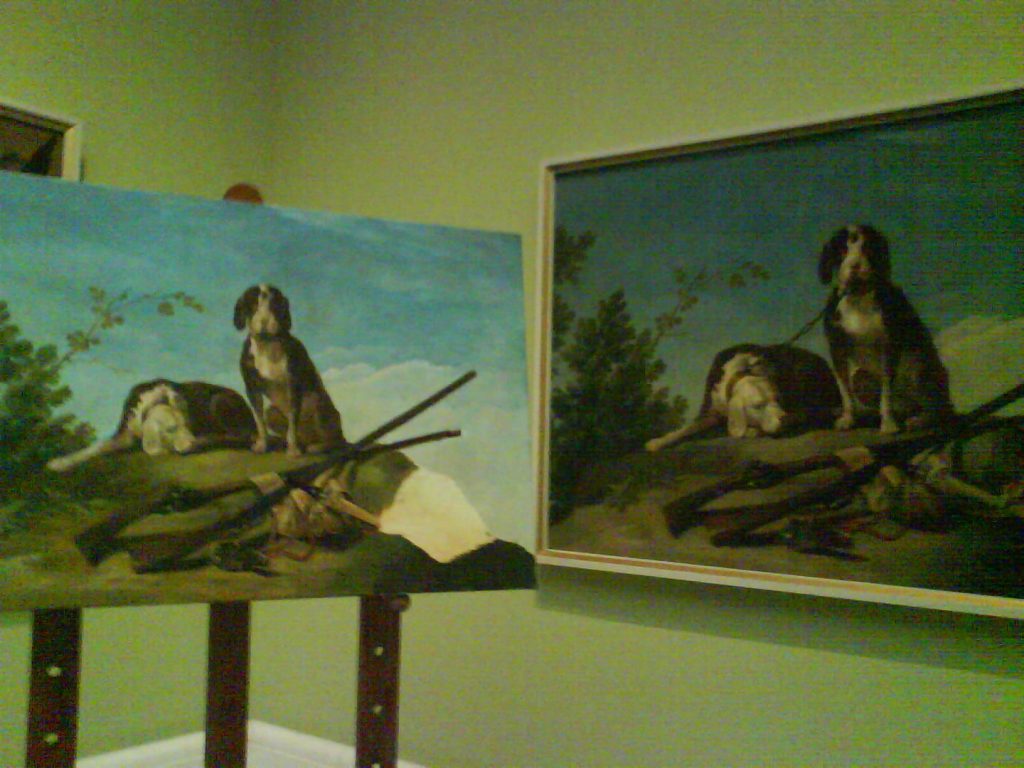Copyists of Museo del Prado
Copying has always been the best method to learn how to paint. Masters like Goya, Rubens or Picasso began their careers by copying paintings of Velázquez, Tiziano or El Greco.
However, nowadays this method has fallen in disuse and there are only a few museums that allow it: it complicates visitors’ circulation through the museum’s galleries. Many painters also prefer to work at their studios, copying from art books or large-sized prints, which facilitates the outline of the painting on the canvas.
Nevertheless, Museo del Prado respects this ancient tradition and permits a limited number of people to access their galleries to copy directly from the original paintings and to learn from some of the masterpieces and their authors. At present, there are no more than 50 official copyists at Museo del Prado, from which only about 15 come everyday to paint.
Many of the copyists sell their paintings to afford their hobby.
The process
Copies must have a different size from the original and their maximum size is 130 x 130 cm. In addition, it has to be painted in a limited time, depending on the characteristics of the original painting.
Not all paintings can be copied. They can’t be in crossing zones (doors, corridors) or crowded areas (central gallery, Las Meninas…). It also has to be exhibited (a large part of the collection is stored due to the limited space and it rotates from time to time).
The difficulty and originality of the copies
At present, about 70 copies are made per year. The museum takes photographs and catalogues each one of them and issues a certificate.
This limited amount is due to the restricted number of authorised copyists and because the copy process from the original is more complicated and slow than studio ones. It requires a considerable physical effort (they stand during many hours), a high level of concentration (visitors get interested in them and their paintings) and they don’t have technical assistances to help them to outline the painting. Even though they have a masterpiece in front of them and we refer to them as “copy”, the new painting implies a great creative effort and it is, afterall, an “original” work.
Precisely, this difficulties are the ones which add value to the copies entirely made at Museo del Prado, regarding the ones made at studios or directly printed on canvas. The copyists have the masterpiece in front of them and they can clearly perceive the brush-strokes and the colours.



